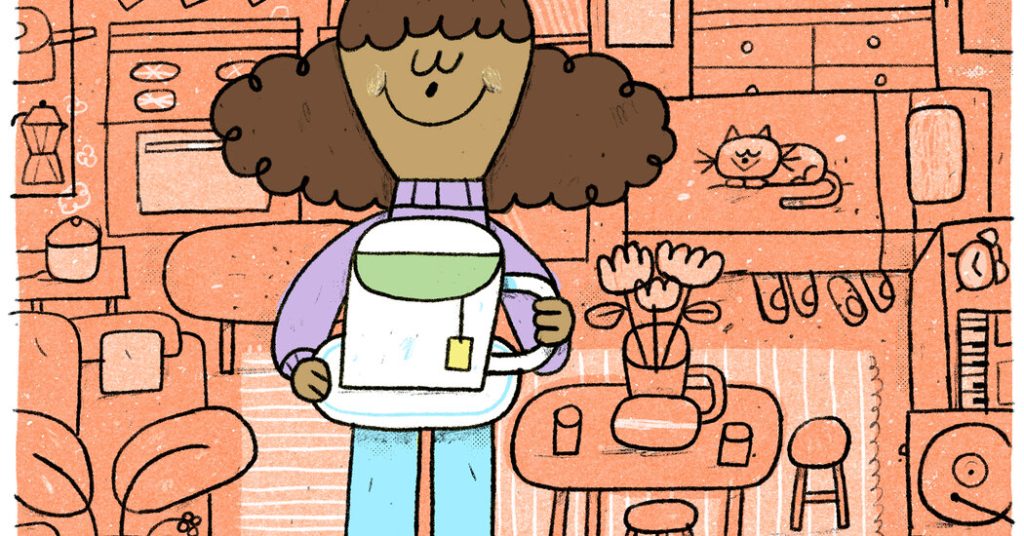Stories on Living Small, at Large
4 min read
Times Insider explains who we are and what we do and delivers behind-the-scenes insights into how our journalism comes together.
It was a sunny September morning when Julie Lasky, a contributor to The New York Times’s Real Estate section, was scoping out dog owners on a street in Harlem.
After a few minutes of waiting around with her dog, a 12-year-old Wheaten terrier named Clara, she spotted a woman walking a large pit bull.
Ms. Lasky walked up to the woman, introduced herself as a reporter working on an article, and asked: “Do you find your neighbors are scared of your dog? Do you have trouble renting an apartment?”
Yes, the woman told her. She had just moved to Harlem from Los Angeles and had lost out on an apartment that seemed to be a sure bet after the landlord learned of her dog’s breed.
The experiences of dozens of such New Yorkers living with large dogs in small apartments — one of whom was rejected by 27 landlords — became the focus of a recent edition of Living Small, a biweekly column that Ms. Lasky writes with Tim McKeough for The Times.
In it, Ms. Lasky and Mr. McKeough provide tips on making the best of cramped homes and profile people with innovative solutions to the square footage crunch.
“We were getting a lot of feedback from readers who wanted to read about homes that were more modestly scaled,” Ms. Lasky said. At the suggestion of Noel Millea, the deputy editor on the Real Estate desk, she wrote the first column — about small homes known as “accessory dwelling units” as a potential solution to the housing crisis — in February.
In an interview, Ms. Lasky and Mr. McKeough shared their vision for the series, the compact living spaces that inspire them and the future of smaller living. This conversation has been edited.
How did you get the idea for this column?
JULIE LASKY Tim and I have written about a lot of beautiful homes for The Times, but many of them were beyond the budgets of ordinary Americans. We wanted to respond to the needs of the readers, many of whom live in cities and in multifamily housing. And homes aren’t just getting smaller in cities; they’re shrinking across the country.
TIM MCKEOUGH Though many of our articles focus on small-scale homes, the intention of the column isn’t just to focus on physically small spaces. It’s also about living small in other ways, whether it’s a smaller budget or a smaller carbon footprint.
What are your own living situations?
MCKEOUGH I lived in small apartments for a long time, but I’m living in the Berkshires in Massachusetts now. I have a bit more space.
LASKY I live in a duplex in a brownstone that I rent in Harlem with my husband and my 18-year-old daughter. I’ve been here for 14 years now. Like many young people who start small and eventually move to a bigger place, I’ve progressed. Or, at least, that used to be the trajectory for many Americans. Now people might find themselves living small and even smaller as they age.
Julie, you’ve written about some unique individuals, like a man living in a 350-square-foot Brooklyn apartment with 250 house plants and a woman in Manhattan who shares a cramped space with a 156-pound Great Dane. How do you find these people?
LASKY Alejandro, the plant owner, sent an email to our general Real Estate inbox. It was perfect because he was a self-taught interior designer who had experience helping people with tiny New York apartments. He had divided his space into six discrete environments, all overflowing with house plants. The article on dogs was pitched by a publicist who suggested I write about living in a small space with giant dogs; she lived with her husband and their two 70-pound dogs in a Manhattan apartment that was less than 700 square feet.
What has been your most memorable column, Tim?
MCKEOUGH I recently wrote about Stephanie Carter, who was married to Ashton Carter, the former defense secretary who passed away after a heart attack last year. She moved into a one-bedroom unit in the same building where she and her husband had lived. I was so impressed by how quickly she decided to move and what she wanted from her space. That’s a huge undertaking to downsize and unload the stuff you’ve collected over decades.
Does it seem as if this trend of living smaller is here to stay?
LASKY That remains to be seen. The call for greater density in housing, which means fitting more people in a smaller space, will be fought for a long time between the forces of affordable housing and those who want to keep their uninterrupted clusters of single-family properties. That kind of contest isn’t just about cities, suburbs or rural places. It’s a complicated question that’s going to play out differently in San Francisco, or New York, or Williamstown, where Tim lives.
What topics do you hope to tackle next?
LASKY I’m interested in what’s going to happen to communities of floating homes that have been so popular. It’s one of those things that people dream about and look at in an aspirational way, but it also is one that’s going to be affected by waterfront development and the effects of climate change.
MCKEOUGH I’m working on a piece about a couple who had a big home and decided to give it up. Now they live in three tiny places, one of which is mobile, so they can move around and be where they want to be.
LASKY Man, I’m jealous, that’s good!





